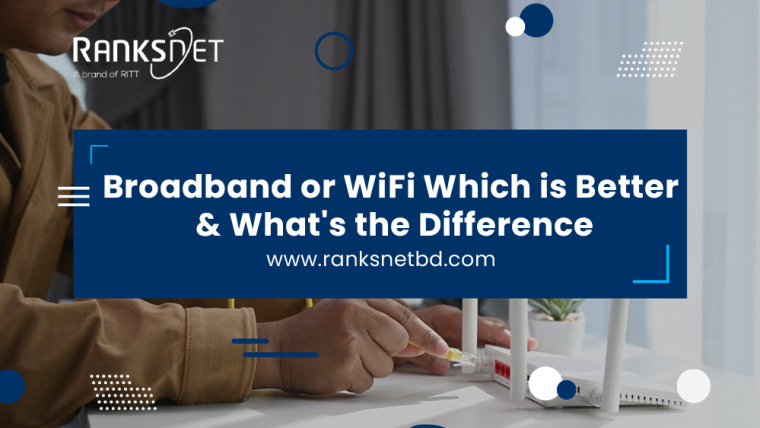In today’s digital age, internet connectivity plays a crucial role in our lives. Fiber optic cable internet has revolutionized the way we connect to the online world, offering unmatched speed and reliability compared to traditional copper-based connections.
This advanced technology has transformed communication networks by utilizing light signals transmitted through thin strands of glass or plastic fibers.
In this blog post, we will explore the inner workings, advantages, and diverse applications of fiber optic cable internet.
We will uncover its exceptional speeds, highlight its vast bandwidth capabilities, and discuss the significant benefits it brings to various sectors. Also, the challenges, future prospects, and forthcoming developments in this field.
How Fiber Optic Cable Internet Works
Fiber optic cable internet operates on a fascinating principle that involves the transmission of data using light signals through thin strands of glass or plastic fibers.
This innovative technology has revolutionized the world of connectivity, providing unprecedented speed and reliability. Let’s explore the key steps in how fiber optic cable internet works:
Data Transmission
Information, such as text, images, or videos, is converted into electrical signals by devices such as computers or routers. These electrical signals are then converted into light signals by optical transmitters using lasers or light-emitting diodes (LEDs).
Light Signal Propagation
The light signals travel through the core of the fiber optic cable, which is made of highly transparent materials such as glass or plastic. The core is surrounded by a cladding layer that has a lower refractive index, ensuring that the light signals remain confined within the core.
Total Internal Reflection
As the light signals move through the core, they undergo a process called total internal reflection. Total internal reflection occurs when the light hits the boundary between the core and the cladding at an angle larger than the critical angle. This causes the light to bounce off the boundary and continue propagating along the core.
Signal Reception
At the receiving end, optical receivers equipped with photodiodes capture the light signals.
The photodiodes convert the light signals back into electrical signals. The electrical signals are then processed by devices such as computers or other network equipment. This processing involves decoding and interpreting the data to recreate the original information.
Advantages of Fiber Optic Cable Internet
- Unparalleled Speed: Fiber optic cable internet offers significantly higher data transmission speeds compared to traditional copper-based connections.
- High Bandwidth: Fiber optic cables have a much larger bandwidth capacity, allowing for the transfer of large volumes of data simultaneously.
- Lower Latency: The speed of light transmission through fiber optic cables results in lower latency, minimizing delays in data transfer.
- Resistance to Interference: Fiber optic cables are immune to electromagnetic interference, ensuring a stable and reliable connection.
- Enhanced Reliability: Fiber optic cables are less prone to signal degradation and can withstand harsh environmental conditions.
Fiber optic cable internet works by leveraging the power of light signals to transmit data through specialized fiber optic cables. This technology offers remarkable advantages in terms of speed, reliability, and resistance to interference, making it a vital component of modern connectivity.
With its ability to handle increasing data demands, fiber optic cable internet paves the way for a more connected and digitally advanced future.
Applications of Fiber Optic Cable: Empowering Connectivity Across Industries
Fiber optic cable, with its exceptional speed, reliability, and bandwidth capabilities, has found widespread use in various industries and applications. From high-speed internet for residential users to critical infrastructure supporting businesses and institutions, fiber optic cable plays a pivotal role in enabling seamless connectivity. Let’s explore some of the key applications of fiber optic cable:
-
High-Speed Internet
Fiber optic cable provides ultra-fast internet connectivity for residential users, allowing for seamless streaming, online gaming, and data-intensive activities.
With its high bandwidth capacity, fiber optic internet ensures multiple users can simultaneously access and download large files without experiencing slowdowns.
-
Business Applications
Fiber optic cable supports essential business operations, facilitating efficient communication, data transfer, and collaboration.
Cloud Computing: Fiber optic connections enable quick and secure access to cloud-based services, allowing businesses to store and retrieve data remotely.
Data Centers: Fiber optic infrastructure interconnects data centers, facilitating the rapid transfer of vast amounts of information for storage, processing, and retrieval.
-
Telecommunications and Network Infrastructure:
Fiber optic cable forms the backbone of telecommunications networks, enabling long-distance communication with minimal signal degradation.
Mobile Network Infrastructure: Fiber optic connections provide the necessary speed and capacity to support the increasing demands of mobile networks, including 4G and 5G technologies.
Network Expansion: Fiber optic cable is deployed to expand network coverage, improve network reliability, and support the growing number of connected devices.
-
Healthcare
Fiber optic cable plays a vital role in medical applications, facilitating high-resolution imaging, remote diagnostics, and telemedicine services.
Digital Imaging: Fiber optic connections enable the transmission of high-quality images and videos used in medical imaging techniques such as endoscopy and ultrasound.
Telemedicine: Fiber optic infrastructure supports real-time video consultations and remote monitoring, enabling healthcare professionals to provide care from a distance.
-
Education
Fiber optic cable empowers educational institutions by enabling high-speed internet access, distance learning, and digital collaboration.
E-Learning: Fiber optic connections facilitate the delivery of online courses, multimedia content, and interactive virtual classrooms.
Research and Collaboration: Fiber optic networks enable seamless collaboration among researchers, facilitating the sharing and transfer of large datasets.
-
Government and Public Services
Fiber optic infrastructure is critical for government agencies and public services, supporting secure and reliable communication, data transfer, and emergency response systems. Fiber optic networks enable the implementation of smart city initiatives, such as intelligent traffic management, public safety systems, and efficient energy management.
The applications of fiber optic cable extend beyond these examples, reaching industries such as finance, media, transportation, and more. With its unmatched speed, reliability, and capacity, fiber optic cable continues to transform connectivity and pave the way for future technological advancements in various sectors, ultimately enhancing our digital lives.
Challenges and Limitations of Fiber Optic Cable
While fiber optic cable offers numerous advantages, it is not without its challenges and limitations. Understanding these factors is crucial for a comprehensive assessment of the technology. Let’s explore some of the key challenges and limitations associated with fiber optic cable:
-
Installation and Infrastructure Costs
Fiber optic cable installation requires specialized equipment and expertise, making it more expensive than traditional copper-based infrastructure.
The initial investment in fiber optic cable infrastructure can be substantial, particularly for widespread deployment in rural or remote areas.
-
Fragility and Vulnerability
Fiber optic cables are delicate and can be easily damaged if mishandled during installation or maintenance. Excavation and construction activities pose a risk to buried fiber optic cables, making them susceptible to accidental cuts or breaks.
Extreme weather conditions, such as hurricanes or earthquakes, can cause damage to aerial or underground fiber optic cables.
-
Limited Last-Mile Connectivity
While fiber optic cables may connect major network nodes and backbones, the “last mile” connectivity to individual households or businesses may still rely on traditional copper or wireless connections.
Extending fiber optic connectivity to every individual premise can be logistically and economically challenging, especially in densely populated areas or remote locations.
-
Upgrading Existing Infrastructure
Replacing or upgrading existing copper-based infrastructure with fiber optic cable may require significant investment and logistical planning. Retrofitting older buildings or established infrastructure to accommodate fiber optic cables can be complex and time-consuming.
Read more: Signs You Need to Upgrade Your Internet
-
Power Dependency
Active components, such as optical transmitters and receivers, require power supply along the fiber optic cable network. During power outages, alternative power sources or backup systems are needed to maintain connectivity, which adds complexity and cost to the overall infrastructure.
-
Limited Flexibility
Once fiber optic cables are installed, they are not easily repositioned or reconfigured, which can be a limitation in situations where network changes or expansions are required.
Unlike wireless technologies, fiber optic cables are physically fixed and do not provide the same level of mobility or flexibility.
Despite these challenges and limitations, ongoing advancements in fiber optic technology and infrastructure are addressing many of these concerns. Innovations such as fiber-to-the-home (FTTH) initiatives, improved installation techniques, and increased availability of fiber optic connectivity options aim to overcome these limitations and bring the benefits of fiber optic cable to a wider audience.
Final Words
Fiber optic cable internet has revolutionized connectivity with its high-speed data transmission and reliability. By utilizing light signals through specialized cables, it offers unparalleled bandwidth and low latency, transforming the way we access and share information. Despite challenges like installation costs and infrastructure limitations, ongoing developments promise an exciting future.
From high-speed internet for residential users to supporting critical infrastructure in various industries, fiber optic cable continues to drive technological advancements.
With its unmatched speed, reliability, and capacity, fiber optic cable is set to play a pivotal role in shaping a more connected and digitally advanced future.



